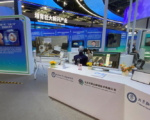China, the world’s largest auto market, is seeing significant advancements in autonomous driving features, with several companies introducing innovative technologies in their vehicles. Chinese electric vehicle (EV) maker BYD recently launched its proprietary advanced driver-assistance system, “God’s Eye,” in a range of models, signaling the start of a potential price war in a highly competitive market.
BYD’s Autonomous Driving Features:
BYD’s “God’s Eye” system is a three-tier platform based on computing power. The most affordable entry-level version, the C model, is available on vehicles priced between 69,800 yuan ($9,500) and 219,800 yuan, under the Dynasty and Ocean series. The system includes features such as:
- Automatic highway ramp exit/entry
- Lane keeping and cruise driving
- Autonomous lane changes and obstacle avoidance
- Autonomous emergency braking and self-parking upon exit
- Remote parking
This version of the system uses 12 cameras, five-millimeter wave radars, and 12 ultrasonic radars. Higher-end variations of the system, God’s Eye A and B, are available on more premium models such as Denza and Yangwang brands, utilizing advanced computing and lidar to create 3D images of a vehicle’s surroundings, assisting in navigation around obstacles.
Tesla’s Full-Self Driving (FSD):
Tesla offers its full self-driving (FSD) software for subscription in China, though the features are limited compared to other markets. Tesla vehicles come with basic autopilot features, such as traffic-aware cruise control and in-lane autosteer.
- Enhanced autopilot, priced at 32,000 yuan, includes auto lane change and auto parking.
- FSD, priced at 64,000 yuan, will soon allow navigation on city streets and recognition of traffic lights and stop signs, with plans for a release later this year.
Huawei-backed AITO:
AITO, another key player in China’s EV space, equips its M7 model with two versions of Huawei’s advanced driving system. The base version includes navigation on highways, auto ramp entry/exit, and partial auto lane changes, priced at 249,800 yuan. The advanced version, priced at 289,800 yuan, includes lidar-powered features, such as city street navigation and automatic emergency braking for special-shaped obstacles.
AITO’s advanced driving software is also available for subscription on EVs from other brands, including Changan’s Avatr, for approximately $4,100.
Xpeng’s MONA Series:
Xpeng introduced its most affordable EV with advanced autonomous driving capabilities through its MONA sub-brand. The MONA M03 Max, priced from 155,800 yuan, includes a vision-only solution with lane-keeping control, adaptive cruise control, navigation on highways, and smart parking. The vehicle will also feature smart exit from parking spaces.
Xiaomi’s Autonomous Driving System:
Xiaomi has introduced its own smart driving system in the SU7 EVs, priced from 215,900 yuan. The lower-end version of the system includes auto parking and highway navigation. The higher-end version, equipped with lidar, enables additional features like urban navigation, collision avoidance, and special vehicle recognition, available in SU7 trims priced above 245,900 yuan.
















